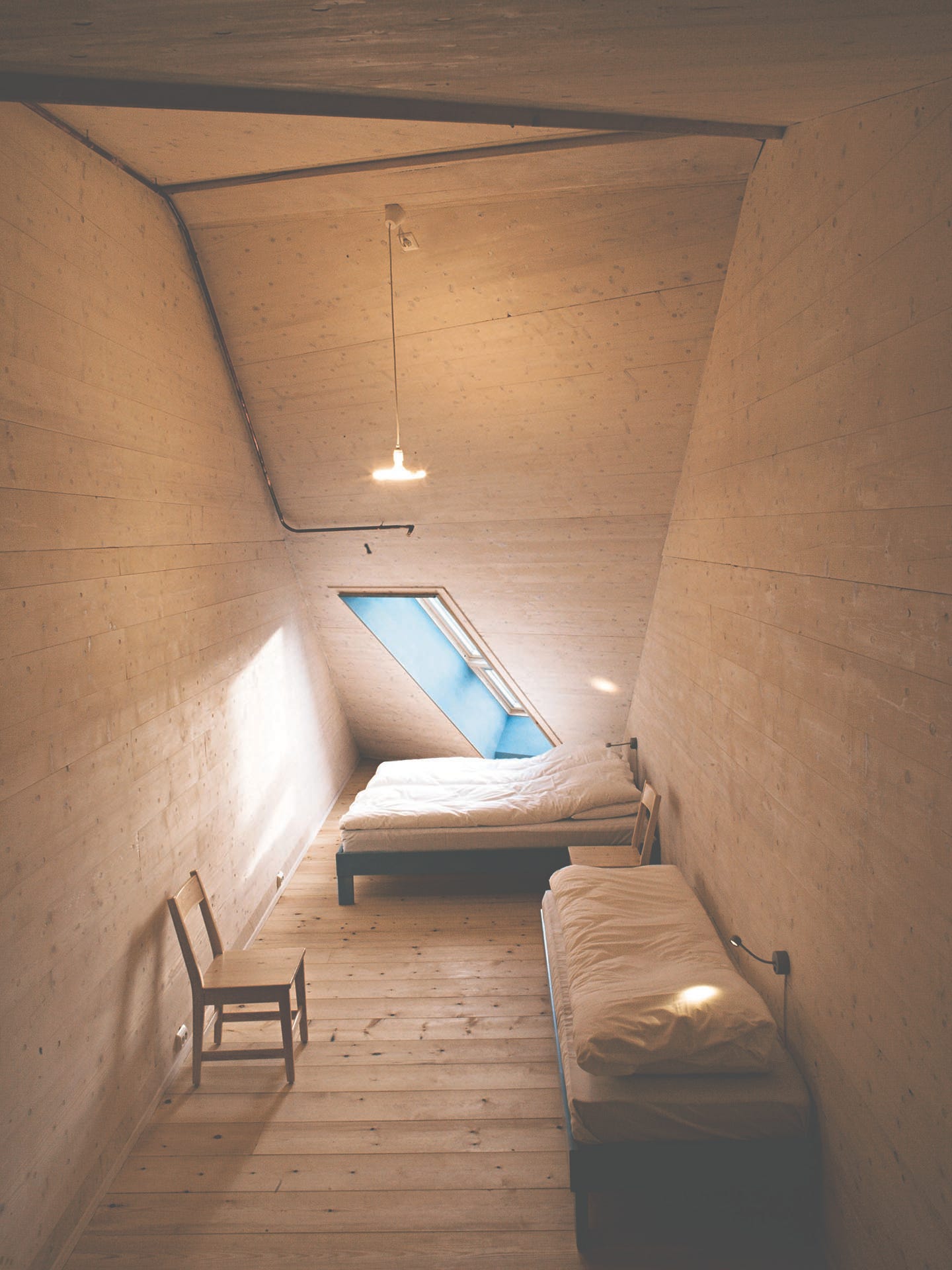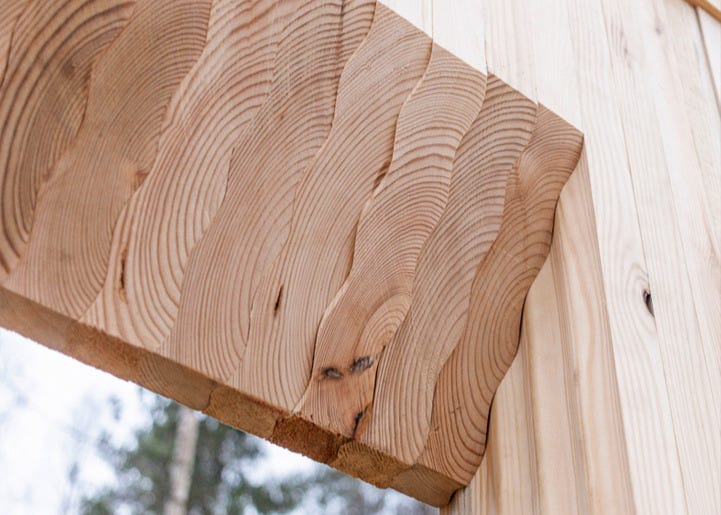The Brief
Adhesive-free wood systems offer ways of building with regenerative materials that use no toxins or fossil-based chemicals. Researchers have used the aversion to adhesives as a spring point to invent entirely new structural forms - often leveraging new technology like CNC routing and AI. The result is an unlock of new systems, structural expressions, and circular economies for wood. Glue-less systems are healthier for humans, independent of oil markets, and offer opportunities for continued architectural innovation - a pairing of cutting-edge technology with one of our oldest building material.
The Unpack
Last week, I highlighted the adhesives holding together our mass timber movement. These glues have unlocked huge potential for small pieces of lumber to become large, structural members. While it’s only about 1% of CLT, popular adhesives contain potentially harmful chemicals and/or derive from non-renewable sources.
This week, I explored the question: what does adhesive-free mass timber look like? A collection typologies exist that use physical joinery to create glueless wood systems. These techniques need no glue, instead relying on dowels, nails, friction, or all three.
Doweled
Dowel Laminated Timber (DLT) or Dowel Cross Laminated Timber (dCLT) - also known as Brettstapel - connects stacks of lumber with low-moisture dowels. Manufacturers stack and clamp layers of lumber before auger drilling holes to the dimension of the shrunken dowels. Once the hardwood dowels are inserted, their moisture content equilibrates with the surrounding wood - causing them to expand. This creates a secure, friction connection without the use of glue.
This past summer, I had the chance to visit a leader in DLT production, Thoma-Holz GmbH, in Austria. Thoma-Holz uses fluted beech wood dowels to create their prefabricated all-wood wall, floor, and roof panels - a system they call, Holz100. They leverage automation, CNCs, and seasonally-tuned harvests to create healthy, solid-wood buildings. The lack of adhesives also makes material reuse or decomposition possible.
Norwegian architecture firm Helen and Hard is a leader in dowellam design. They used the Holz100 system for the Pulpit Rock Mountain Lodge in Norway - designing custom, prefabricated DLT “ribs” for the building. Mass timber was used as the structure, insulation, and interior finish material - demonstrating the solid-timber wall’s functionality as thermal mass in extreme climates. DLT can also be CNC’d with a variety of fluting patters to increase sound absorption.
StructureCraft, a Canadian mass timber manufacturing company, started producing DLT in 2017. For a list of some DLT projects in North America, see StructureCraft’s website. For further investigation into DLT manufacturing, watch Matt Risinger tour of Kung Holzbau’s Switzerland factory.
Nailed It
Another adhesive-free form of mass timber is Nail Laminated Timber (NLT) or Nail Cross Laminated Timber (nCLT). NLT and nCLT fasten together pieces lumber with nails instead of dowels. This method can be faster than doweling and produce less “waste”. Although, the metal nails can be a concern for thermal bridging, and the carbon impact of using steel nails is also an important consideration across the scale of a mass timber building.
Woven
Over the last few years, Finish firm Aalto Haitek has developed a glue-free, mass timber system based on the structural strength of the wave. Titled, Wave Layered Timber (WLT), the interlocking pattern creates a flexible yet strong system of adhesive-free wood construction.
Zip It
Zipper wood is an experimental wood construction technique from HiLo Lab, LoDo Lab, and HouMinn Practice, where algorithmically-generated patterns are CNC’d into two pieces of lumber. When pressed together, the carved teeth snap into place - creating beautiful twisted (and strong) joined wood members. The current system relies on glue to ensure the teeth don’t unzip. Could bio-based alternatives expand the applications for innovative wood products like this?
Structural Waste
Tangential Timber, from the University of Virginia School of Architecture and After Architecture, uses photo imaging, 3D models, algorithms, and CNC routing to turn wood waste into structure. Over 55% of harvested timber is unusable for construction because of irregularities or damage, claim the team. By slicing the waste wood into round pucks and creating 3D models of each, digital programs can assemble a structural pattern from the unique elements and instruct a CNC where exactly to cut. The result is an unlock of potential for the majority of trees we harvest. See their profile in Architect Magazine for more info.
Article I’m Reading
“New renderings depict three unbuilt Frank Lloyd Wright skyscrapers in astonishing detail” by Audrey Wachs in The Architect’s Newspaper
The description: Spanish architect David Romero brought three of Frank Lloyd Wright’s unbuilt skyscrapers to life in a new set of renderings. The most eye-catching is The Illinois - a mile-high tower for 100,000 people and 15,000 cars. Wright had no site or client for this project, he proposed it as a vision for the future of cities. Through revisiting The Illinois, I found discussions on where Wright’s predictions missed, and was reminded of the power of paper architecture. It is so much easier to discuss ideas through a project - real or imagined.
Podcast I’m Listening To
“Seth Godin On Creativity, Spreading Big Ideas, & New Ways to Address Climate Change” on The Rich Roll Podcast
The description: Seth Godin talked with Rich about his new book The Carbon Almanac - which is a collection of facts and figures around climate change, organized by over 300 contributors. He spoke about the true cost of our energy, systemic shifts, and cows in this fascinating conversation. I’ll be diving into his book in the coming weeks.













